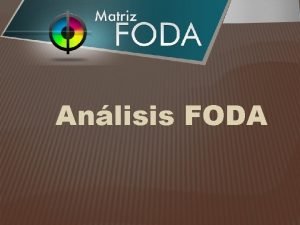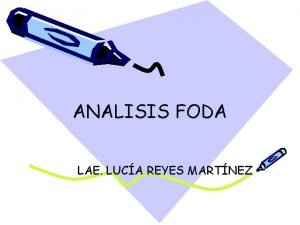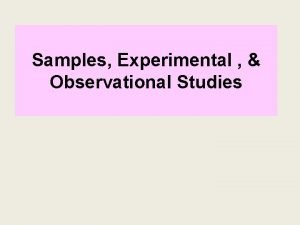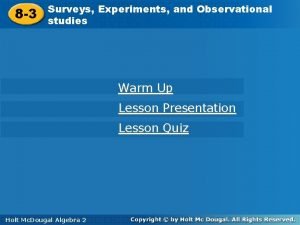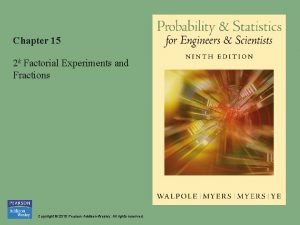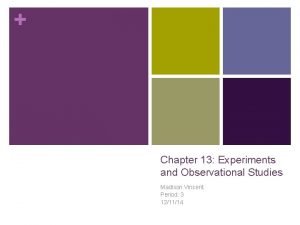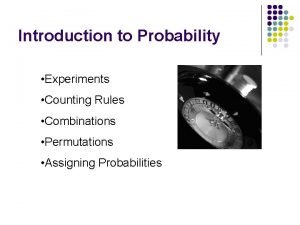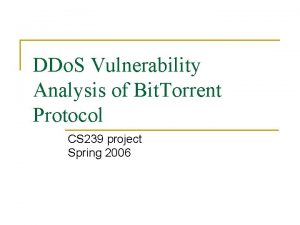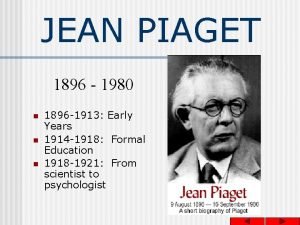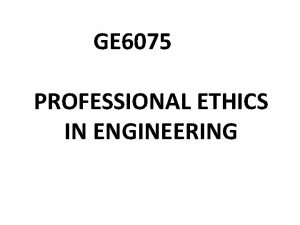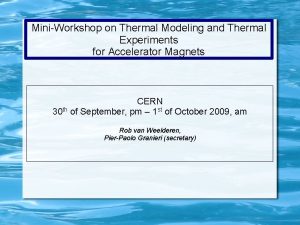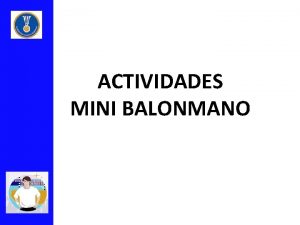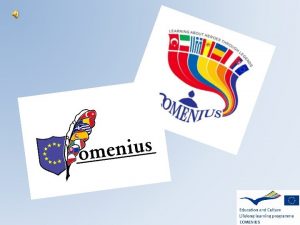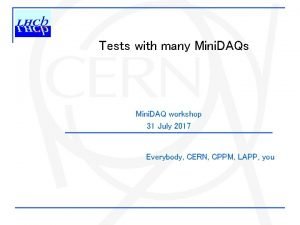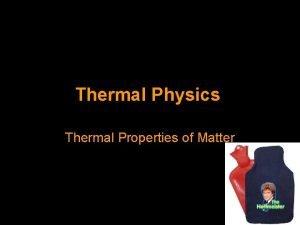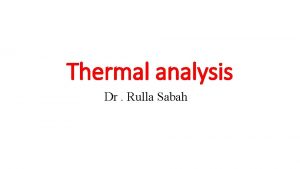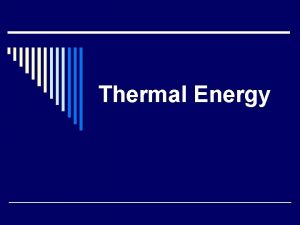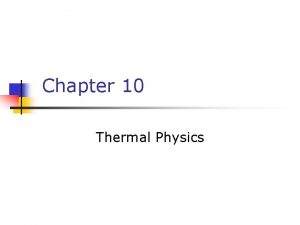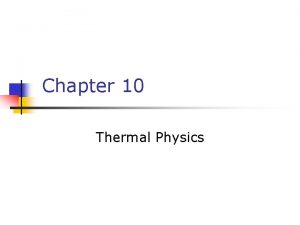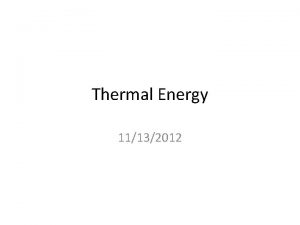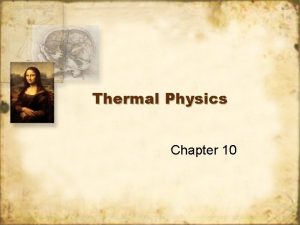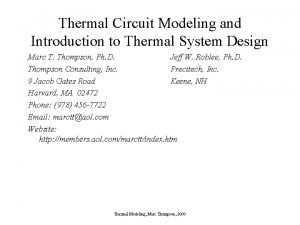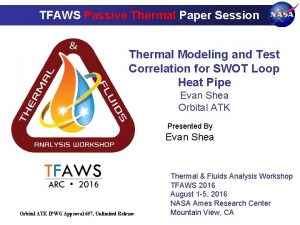Mini workshop on thermal modeling and thermal experiments



















- Slides: 19

Mini workshop on thermal modeling and thermal experiments for accelerator magnet 30 th Sept – 1 st Oct CERN What we know (and still don’t) on He II heat transfer through electrical insulation for accelerator magnets Bertrand Baudouy CEA, Irfu, SACM 91191 Gif-sur-Yvette Cedex, France bertrand. baudouy@cea. fr 1

Outline ▫Introduction on He II heat transfer in accelerator magnet coils ▫Heat transfer in All-polyimide electrical insulation ▫Heat transfer in ceramic porous insulation ▫Comparison of “permeable” insulation thermal characteristics ▫Heat transfer in All-impregnated insulation ▫Thermal properties ▫Some ideas and perspectives 2

He II heat transfer in accelerator magnet coils ▫“Wet” magnets with “heat exchanger” ◦Large internal losses and small stored energy ◦Single phase coolant in contact with conductor ◦Cooling Source: Internal heat exchanger ▫Heat transfer between the conductor and the cooling source determines the temperature margin ▫Electrical insulation constitutes the largest thermal barrier ▫LHC Electrical Insulation : All-polyimide ◦ 10 m. W/cm 3 or 0. 4 W/m (cable) ◦ΔT<0. 3 K with permeable insulation or ΔT~4 K with monolithic insulation (He II) ◦Work mainly focus on the permeability (to He) of the insulation ◦Different wrapping schemes ◦The thermal properties of the insulation not a parameter 3

The heat paths (1/2) ▫Heat transfer configuration ◦Volume dissipation in the conductors ◦Collars side is thermally insulated ◦Heat flux goes through the 1 st layer and 2 nd layer ◦Heat flux has to go through the cable − − Conductor Insulation ▫Heat paths to be considered ◦Small face path ◦Large face path Open Channels between insulation 4

The heat paths (2/2) Conductors Small face : Transverse HT through the insulation second layer Insulation First layer Large face : Transverse HT through the insulation and longitudinal HT in the “channels” between conductor insulation November 19 th ▫Transverse HT through insulation ▫“Channels” HT 5

Experimental tools ▫Measurement on coils (CERN) ◦Real coil ◦DC current for heating representative of HT in a coil ▫The “Stack” experiments (KEK, Saclay) ◦Dummy Rutherford cables joule Heated ◦Instrumented with temperature sensors ◦ 5 conductors stack ◦Compression mold Measurement of the overall thermal resistance Is it representative of HT in a coil? ▫The “Drum” experiment ◦Measurement of 1 D transverse HT Does not represents the real confinement in a coil No transient measurement possible Better understanding of HT 6

Heat transfer in All-Polyimide Electrical Insulation ▫State-of-the-art All-Polyimide Electrical Insulation ◦Developed with Kapton, Apical or Upilex ◦Two layers with polyimide glue for binding ◦Polymerisation : ~ 100°C for several hours Courtesy of D. Tommasini Measurement at 1. 9 K, 3 conductors heated 0. 4 W/m Dry insulation ▫New development At CERN Increasing permeability 7

He II heat transfer through permeable insulation ▫Coupling with conduction (with drum experiment) second layer ◦For large heat flux, He II HT<conduction First layer ◦HT model with He II in “channels” in parallel with conduction with Kapitza − − − One average diameter of channels with measurement in Landau and Gorter. Mellink regimes Length = over lapping of wrapping deq≈10 μm 8

He II heat transfer through permeable insulation ▫Importance of the small face (with the Stack experiment) ◦Experiment with artificial holes in a “dry” insulation ◦Experiment with the inner spacer or insulation 9

He II heat transfer through permeable insulation ▫Importance of the large face (with the Stack experiment) ◦Thermal decoupling between conductors ◦Heat transfer in channel? 10

Heat transfer in small channel • Heat transfer in small channels – – deq [56; 4800] µm L [30; 40] mm • Heat transfer in small slits? – 53 µm x 16 mm – – – AGM not modified vortex spacing 1 µm fully developed turbulence • Heat transfer in deq of 10 µm range and lower? – – – Modification of the Physical law? Bulk properties? Variable cross-section? Transient? Phase change? N. Kimura, A. terashima, A. Yamamoto, and T. Shintomi, “Heat transfer through narrow cooling channels in pressurized helium II”, presented at CEC 1999, Montréal, Canada N. Kimura, H. Nakai, M. Murakami, A. Yamamoto, and T. Shintomi, “A study on the heat transfer properties Of pressurized helium II Through fine channels”, Adv. Cryo. Eng. 41 A, 2005 11

Heat transfer in ceramic porous insulation (1/2) ▫Ceramic “porous” electrical insulation ◦One wrapping with 50% overlap ◦Heat treatment of 100 h at 660°C ◦ 5 conductors heated ◦ 10 MPa compression only! ▫Collaboration between KEK-Saclay ◦KEK Sample holder ◦KEK temperature measurement technique ◦Saclay insulation 12

Heat transfer in ceramic porous insulation (2/2) ▫Stack experiment results ◦ΔT~few m. K for LHC thermal loads ◦Representative (Mechanical load, temperature measurement) ▫H. Allain Ph. D ◦Darcy law valid (Landau regime) ◦Gorter-mellink? ◦Transient? 13

Permeable Insulation Thermal Characteristics 14

Heat transfer in All-impregnated insulation (1/3) ▫Two electrical insulation scheme developed during the NED project ◦Ceramic porous media ◦All-impregnated electrical insulation ▫The fiberglass epoxy insulation ◦Plain weave E glass fiber sheets ◦Mixture of DGEBF epoxy resin, typified by Dow DER 354 and DETDA hardener, typified by Albemarle Ethacure 100 ▫Impregnation ◦Produced using a vacuum impregnation technique in a similar way to magnet impregnation ◦Curation under 1 MPa pressure at a temperature of 90ºC ◦When the epoxy was gelled the temperature was raised to 130ºC for 16 hours S. Canfer et. al, “Insulation Development for the Next European Dipole”, IEEE Trans. on Applied Superconductivity, 18 issue 2, 2008, pp. 1387 -1390 15

Heat transfer in All-impregnated insulation (2/3) ▫Kapitza resistance and thermal conductivity in He II determination ◦ 4 thicknesses (39, 106, 144 and 293 μm) ◦Profile measurement for real thickness and surface H W 16

Heat transfer in All-impregnated insulation (3/3) ▫Kapitza resistance and thermal conductivity in He II ▫Thermal conductivity is roughly 5 times larger than the Kapton’s one ▫Kapitza resistance is two times lower than one data found in the literature B. Baudouy and J. Polinski, “Thermal conductivity and Kapitza resistance of epoxy resin fiberglass tape at superfluid helium temperature”, Cryogenics 49, Issue” 3 -4, March-April 2009, Pages 138 -143 17

Thermal properties and coupling • Kapton – – K, Rth in He II known Cp or diffusivity? Heat transfer coefficient in He I? Transient heat transfer coefficient in He II and He I? • Fiber glass and epoxy resin – – K, Rth in He II known Cp or diffusivity? Heat transfer coefficient in He I? Transient heat transfer coefficient in He II and He I? • Ceramic insulation properties? • Heat transfer in coupled conduction and He II? – Tortuous small channels 18

Some ideas and perspectives ▫Heat transfer experiment in small channels (10 μm diameter range) ◦Coupling between conduction and He II ◦Variable cross-section ◦Channels in parallel ▫Thermal properties measurement for the only insulation ◦SS and transient for Cp, h… ▫Ceramic insulation (permeable state) within FJPPL ◦Thermal conductivity measurement (KEK within CERN-KEK Collaboration) ◦He II Stack experiment − Continuation of He II exp at Saclay and s. He and b. He at KEK (FJPPL) ◦He II insulation only experiment (Drum experiment) ▫Ceramic insulation (impregnated state) ◦Thermal conductivity measurement ◦He II Stack experiment ◦Kapitza experiment 19
 Helen c. erickson nursing theory
Helen c. erickson nursing theory Relational modeling vs dimensional modeling
Relational modeling vs dimensional modeling Estrategia fa (maxi-mini)
Estrategia fa (maxi-mini) Fo maxi maxi
Fo maxi maxi Estrategias fo (maxi-maxi ejemplos)
Estrategias fo (maxi-maxi ejemplos) Thermal energy section 3 using thermal energy
Thermal energy section 3 using thermal energy Thermal transfer vs direct thermal printing
Thermal transfer vs direct thermal printing Observational study examples statistics
Observational study examples statistics What are surveys experiments or observations
What are surveys experiments or observations 2k factorial experiments and fractions
2k factorial experiments and fractions Chapter 13 experiments and observational studies
Chapter 13 experiments and observational studies Miller and urey's experiments attempted to demonstrate
Miller and urey's experiments attempted to demonstrate Counting rule for combinations
Counting rule for combinations Pros cons animal testing
Pros cons animal testing Ddo vulnerability
Ddo vulnerability Http://earthobservatory.nasa.gov/experiments/biome/
Http://earthobservatory.nasa.gov/experiments/biome/ Test your hypothesis
Test your hypothesis 1980-1896
1980-1896 Balanced outlook on law
Balanced outlook on law Science experiments for highschool
Science experiments for highschool


